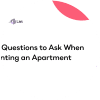9 Best Neighborhoods in Minneapolis, MN

With fantastic food, extensive city amenities, and midwestern charm, Minneapolis draws newcomers looking for a growing tech scene, strong job market, and proximity to lakes and greenspace. Locals don't even seem to mind the notorious winters when there's so much to see, do, and explore. Best of all, Minneapolis is extremely friendly to renters, with scores of apartment complexes to choose from.
Ready to move to the Twin Cities? Discover some of the best neighborhoods in Minneapolis, MN
1. Whitter
Located south of Downtown Minneapolis, Whitter housed wealthy business people and government officials during the 1800s. This historic, upscale neighborhood now combines historic charm with modern amenities. Locals love the artistic vibe of Whittier with multicultural businesses, restaurants, and organizations.
Once a neighborhood for well-heeled locals, Whitter is among the most affordable communities in Minneapolis. Renters have their choice of apartment complexes or red-brick row houses that once housed working-class family homes. Whittier also embraces the nickname "The International Neighborhood" for its presence of families from different corners of the globe. You'll meet neighbors from China, Vietnam, Mexico, and East Africa, among other areas.

2. Marcy - Holmes
Marcy-Holmes is the oldest neighborhood in Minneapolis, with renovated industrial buildings dating back to the 1800s. One of its landmark buildings is the Pillsbury A-Mill. Beyond the industrial vibe, locals enjoy green space along the banks of the Mississippi River. The neighborhood is known for its transformation, including the old railway crossing the Mississippi. The Stone Arch Bridge is now open to cyclists and walkers.
March-Holmes is also known for its trendy bars and live music, thrift stores, and multicultural eateries that come alive in the Dinkytown district. The area is popular with students looking for some nightlife and proximity to the nearby University of Minnesota.
3. Warehouse District
The Warehouse District, or the North Loop, is celebrated for its innovation and is home to start-ups, hip bars, and gay-friendly nightclubs. The colorful neighborhood is also home to the famous Bob Dylan mural, where tourists and locals stop for a selfie.
The Warehouse District is a prime location for the start-up workforce and anyone who wants to live in the heart of Minneapolis. Look for apartments in converted warehouses that were once fashion and design shops. This vibrant Minneapolis neighborhood is also home to the Minneapolis Farmers Market with locally made products and treats. Sports lovers are also blocks away from Target Field to see the Minnesota Twins play.

4. Loring Park
The charming Minneapolis neighborhood of Loring Park boasts green space, a lake, and cycling paths. Young professionals settle into Loring Park for its quick access to Central Minneapolis, as well as its restaurants, cafes, and independent shops. This Minneapolis neighborhood is also home to the Basilica of St. Mary and the city's Convention Center.
The namesake park offers a seasonal wading pool and ice skating rink, along with a fishing pier and garden. Locals can pick up a book or leave one behind at the Little Free Library while enjoying a bike ride. However, one of the best things to do in Loring Park is take in the city views blanketed by blossoms in the spring or the snowy backdrop come winter.
5. Elliot Park
Elliot Park is part of the more extensive Central Minneapolis community, sharing borders with Downtown West and Downtown East. You're also not far from Loring Park. Elliot Park is among the oldest neighborhoods in Minneapolis with industrial development along the Mississippi River. By the end of the 19th century, the area experienced growth and was home to the city's only two parks that attracted newcomers.
After a period of decline during the mid-20th century, the rise of freeways brought new businesses to the area and fueled the commercial sector. New apartment complexes and condominiums increased the influx of young professionals looking for a cosmopolitan lifestyle.
6. Lowry Hill East
Situated in southwest Minneapolis, Lowry Hill East was developed during the 1880s with the help of a horse-drawn streetcar line. The neighborhood is a mix of residential, multi-unit apartment buildings, single-family homes, and commercial growth. The adjacent streets around Lowry Hill feature bars, coffee shops, restaurants, and shops.
Beyond the restaurants and urban amenities, Lake of the Isles is just west of the neighborhood. The nearby Lake Bde Maka Ska attracts locals for canoeing, swimming, windsurfing, and paths for cycling.

7. Downtown West
Downtown West is a business hub of Minneapolis where you can walk out of your apartment to work or visit local attractions. Residents have their pick of live music bars, restaurants, and the pedestrian-friendly Nicollet Mall, which is filled with clothing stores. Downtown West is also an architectural gem for its restored buildings and modern skyscrapers.
Cultural stops are also plentiful around Downtown West. The Orpheum Theatre offers live entertainment at this acclaimed venue for Broadway-caliber performances and more. The Music Box Theatre hosts live music and theatrical productions. For a literary fix, The Minneapolis Central Library features a stunning collection of art, windows for natural light, a rooftop garden, reading events, and community services like tutoring.
8. Carag
South Uptown, Minneapolis Carag was once called CARAG before residents voted for a name change. The residential neighborhood is bordered by the recreational Lake Harriet and Bde Maka Ska. Lyndale Park Rose Garden and Thomas Sadler Bird Sanctuary offer a reprieve from city living for a stroll through green space.
South Uptown's cozy neighborhood is convenient for commuters looking for a more laid-back vibe. Neighborhood kids also have access to playgrounds and gardens.

9. Downtown East
Downtown East is home to the Mill District and the iconic 1883 Stone Arch Bridge. Cross the bridge to enjoy views of St. Anthony Falls. Locals also bike and stroll along riverside green spaces to see Mill Ruins Park.
This Minneapolis neighborhood is home to the Mill City Museum, which is housed inside a landmark former flour mill. Downtown East was once acclaimed for its title as the flour milling capital of the world. Today, old warehouses are home to apartments and lofts. The major cultural draw includes the Guthrie Theater presenting classic and modern plays staged from a historic building. Beyond the gorgeous architecture, Downtown East is also home to sophisticated lounges, cafes, and shops.
Which Minneapolis Neighborhood is Right for You?
Moving to Minneapolis and ready to start looking for your new home? Browse Apartment List to find that dream Minneapolis apartment.
Share this Article

Explore properties in Minneapolis, MN


